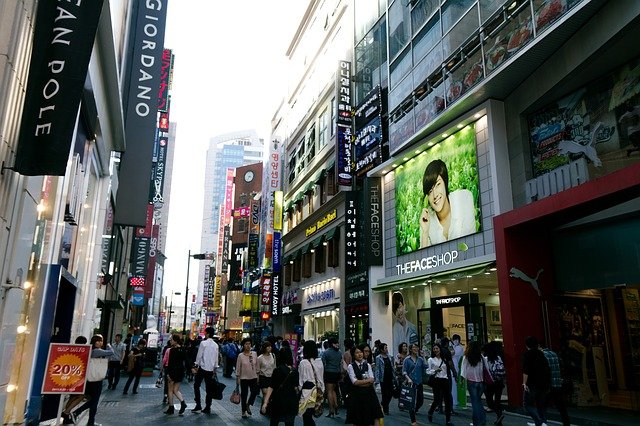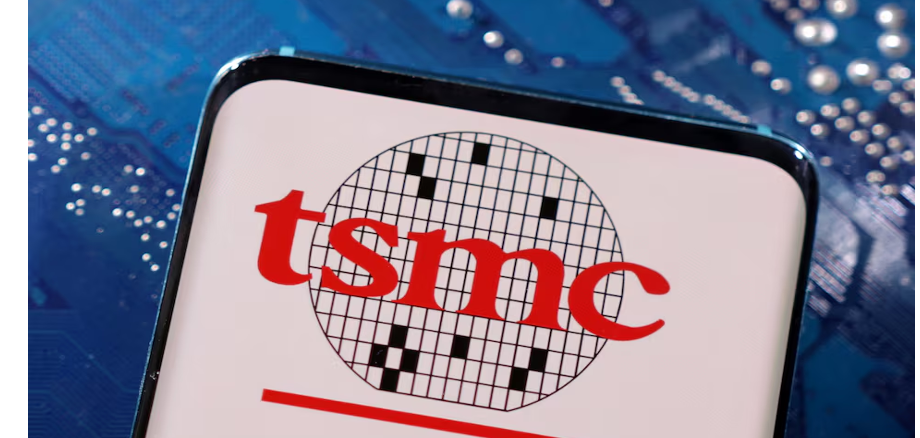Korakot Rueanjun

Korea is one of the countries of which their culture is vibrant and unique. The vividness of Korean culture including arts, music, architecture, cuisine, and clothing represents the nation’s identity and the worthful cultural legacy that put together tradition and modernity seamlessly. Some aspects of Korean culture have been brought up and transmitted around the world via TV dramas and Pop music, creating the “Hallyu” or “Korean Wave”. The Korean Wave, resulting from the craze over Korean culture since the late 1990s, has set up the popular culture of Korea, and allows its charms to gain awareness and became well-known in the eyes of global community. This phenomenon makes people be more enthusiastic such a culture and attracted them to explore Korea both physically and virtually afterwards.
In the socio-economic area, Korea is also a destination for migrant workers. At the beginning or in the late 1980s (Kim, 2019, p.1071), a few years before the viral of Korean Wave, foreign workers came in to work as low-wage unskilled employees, particularly, in the field of 3D (dirty, dangerous, difficult) jobs filling the labor shortage which was the crucial problem Korea enduring at that time. According to the data from Korean Statistic Information Service (KOSIS, 2016), Statistics on Foreign Residents by the Local Governments indicated that the increase of migrant workers in Korea doubled in 2007 to 2015, from 259,805 total migrant workers in 2007 to 608,116 in 2015. The risen number of immigrants was not bounded within the cause of job seeking or other economic issues. Correspondingly, there also existed the growth of marriage migrants that came to have a family due to the imbalance between males and females who were ready to settle down. During the same time, the number of marriage migrants lifted up 1.6 times, growing from total 87,964 in 2007 to 147,382 in 2015 (KOSIS, 2016).
All things considered, the increasing number of foreigners from the remarkable statistics of socio-economic matters, reinforced by the strong wave of Korean culture that fascinates people around the world, showed that racial and ethnic diversity is growing gradually in South Korean society. As a result, Korea’s image, from the international point of view, is more multicultural than ever. This situation brings about a significant question which is “Is Korea really (becoming) a multicultural society where different cultures and values gain mutual respect and are recognized by the state and its people?”. The ongoing trend of increasing number of racial minorities and the question are definitely a challenge for Korea which one of the countries that hold a strong sense of homogeneity and nationalism.
Despite the debates and skepticism about multiculturalism in the country, the image of multicultural Korea is an interesting and dynamic subject that will introduce a new aspect of Korea people may not be familiar with to those who are interested internationally. In order to elaborate upon the idea, this essay will talk about demographic statistic, progression and discussion of multiculturalism in Korea, and hopes and proposals for the multicultural image of Korea.
Demographic statistic
Even though Korea has been accepting an influx of foreigners since the late 1980s, 2006 is a crucial stepping stone to start looking into Multiculturalism in Korea. The reason is that it is the year when Roh Moo-hyun, the former president of Korea, officially stated that “the trend toward multicultural society is irresistible” (Kim, 2019, p.1070). In 2006, the foreign population in the country was 910,149, then it climbed up and reached 1 million for the first time in the following year, accounting 1,066,291 registered foreigners in 2007 (Yoon, Song, & Bae, 2007 p.325).

Twelve years later, the number of foreign populations hit the new high score, reaching 2.5 million for the time. The 2019 tally of immigrants residing in Korea during that year was 2,524,656, increasing 6.6 % from the earlier year. The numeral was regarded as 4.9 % of 51.64 net populations of the nation in 2018 (Yonhap News Agency, 2020). Although the figure of foreigners staying in Korea has declined years later due to the spread of COVID-19, starting from 2.42 million as of January 2020 to 1.99 million as of April 2021 (which was said to be “the lowest number in 50 months”) (Kim, 2021), it is estimated that it would begin to recover when the situation is back to normal. And, the proportion of foreign resident may be 9.2 in 2050 (Song, 2007 cited in Yoon, Song, & Bae, 2007 p.326)
Similarly, in 2019, the growing figure of multi-cultural households amounted to 350,000 which was 1.7 % of the overall households in the same year and a surplus of 20,000 households from the sum of 2018 (Statistics Korea, 2020). The rising amount of multi-cultural households was mostly resulted from the total 24,721 cases of the marriage of immigrants in that year which was lifted up by 4.0 % from a year earlier (Statistics Korea, 2020).
Progression and discussion of multiculturalism in Korea
The statistics indicates the gradual but inevitable change of number of immigrants which becomes a challenge for the society and its authority. Korean government have played an active role in promoting multiculturalism and raising awareness of the value of other different cultures. In the international level, Korea started its route to multiculturalism not too long ago. In 2010, Korea ratified, as the 110th country, the UNESCO Convention on the Protection and Promotion of Diversity of Cultural Expressions (UNESCO, n.d.). Furthermore, in 2017, Korea became a member of the Intergovernmental Committee on Cultural Diversity at The Sixth Conference of Parties to the UNESCO Convention on the Protection and Promotion of Diversity of Cultural Expressions and took part in creating international cooperation on the subject (UNESCO, n.d.).

In the internal context, Korean government has implemented a set of laws relevant to immigrants and multicultural matters since the former president Roh mentioned the trend of multiculturalism in Korea. Some of them include Act on the Treatment of Foreigners in Korea (2007) with the main aim to help immigrants live coordinately in the society, Basic Plan for Immigration Policy which was determined to strengthen the support for multicultural families and the national labor force while protecting the human rights for new comers, and Support for Multicultural families Act that laid the basis of ‘Basic Plan for Multicultural Family Policy’ (Shim, 2013, p.11). These policies from the mid-2000s often get contested for not really protect foreigners’ identities and their unique cultures as Yoon In-jin (2007 cited in Shim, 2013, p.14) argues that
Korean policies encourage immigrants to assimilate in to Korean culture rather than holding on to their own ways of life.
However, in 2014, Korea enacted the Act on the Protection and Promotion of Cultural Diversity which is believed to establish a new foundation of promoting cultural diversity, and create social integration in accordance with the universal principle of UNESCO (UNESCO, n.d.).
It is worth noting that the initiation of multiculturalism in Korea was mostly led by the government. This remark may be resulted from the integration of the word ‘multicultural’ with the immigration policies in the mid-2000s due to the demographic problems affecting the economic stability during the period such as low fertility and aging society. Although the implementation of such policies concentrated at the state level under the leading of Korean government help project the efficiency and accountability, it can contribute to problem of slackly meaning and the incomprehension of multiculturalism.
The term of multiculturalism in Korean is usually referred to “damunhwa” which is literally translated to “multi culture” in English. Its definition was loosely defined and covered any issues relating to foreigners when it was firstly familiarized in Korean society (Kim, 2019, p.1071). Moreover, is said that the original meaning of multiculturalism has been devalued as it is perceived as the matter of migration management instead of embracing cultural diversity (Kim, 2019, p.1091). Not only the process of multiculturalism in Korea is obstructed with the meaning issue, it also gets contested with the strong sense of ethnic homogeneity and nationalism. The 2013 Korea General Social Survey, conducted by the survey research center of Sungkyunkwan University reveals that feeling like South Korean, the ability to speak Korean, and holding Korean citizenship are the most regarded qualifications for being true Korean (Kim et al., 2013, p.348-349). This faithful emotion to the national pride generates the idea of “being different as being wrong” (Yoon In-jin 2007 cited in Shim, 2013, p.14). As a result, Korean public who adhere to its nationalist ideology lack the general understanding and the essence of multiculturalism. There also occurs the linkage between the presence of immigrants and social issues such as job competition, crimes, and cultural conflicts; this could lead to negative feeling, discrimination against foreigners, and even objection of multicultural policy. For instance, there was a case of disapproval over an antiracism law driven by Democratic Party in 2009 due to harsh criticism from the public in both conservative and liberal groups (Shim, 2013, p 16).

Credit: Ed Jone/AFP/Getty Images
Hopes and proposals of the multicultural image of Korea
It is certainly a very long way for Korea to achieve an ideal image of multicultural society. However, there are signs of hope that multiculturalism in the country is developing. For example, the South Korean Identity Survey (2005-2020) shows that the majority of Korean respondents in 2020 (44.4%) still support becoming a multicultural country (East Asia Institute, n.d.). Besides, there was the 2014 appointment of Jasmine Lee, a naturalized Korean (Filipino-born), to the National Assembly of South Korea (Huffpost, 2015). The event sparked controversy and racist comments against her as a member of the Congress. Yet, the fact that this groundbreaking phenomenon happened in a homogeneous country like Korea makes it hard to deny that this is a big step of Korea to shift the concept of national identity as a Korean.
Obviously, skepticism and challenges of multiculturalism in Korea are prevailing. The country needs a tool that can both improve and confirm its modern image in the eyes of global community, and communicate and convince Koreans to be more supportive of multiculturalism. Therefore, this paper proposes Media as a means to succeed the goal. Apparently, this is not something new. Nevertheless, Media surely is an effective tool to push multicultural approaches while publicizing Korea’s multicultural image to the international stage thanks to its ability to shape the information, reach audiences, and influence them, directly or indirectly, about political issues (Shim, 2013, p.18). Rather than manipulating it, media should be used as a platform to share creative contents about Multiculturalism, e.g., TV dramas and variety shows, to people. Such contents could tell a story that reflect real social issues and propel the society in a better way at the same time. “Itaewon Class”, a high-rating Korean TV series broadcasted in 2020, is a good example of the capability of media. The drama combines entertainment and social situation well and portrays multicultural issues such as Amerasian children and gender identity in Korea to the public in its country and international level. Recently, a Korean series called “Squid Game” has blown people’s mind globally with its survival plot portraying more than just characters playing game for their life.

dalgona from Squid Game Credit: Netflix
As “the most-watched show worldwide on Netflix” (The Straits Times, 2021), Squid Game has exported Korean cultural contents to more than 100 Netflix accounts within 28 days after the release (Keck, 2021). The phenomenon has blown the fire of Korean craze. As a result, there occurred the rise of events relevant to childhood games and other cultural products featured in the series. For example, an official “Squid Game” themed pop-up store was opened by Netflix in Paris, France (Yonhap, 2021) in order to attract European fans and allow them to experience the excitement as if they were the participants in the game. The series also inspired café around the world to create business opportunity by using the concept of Squid Game such as, in Singapore, the “Brown Butter Café” participated in the hype by creating the “dalgona challenge” which dared people to scrap out shaped melted sugar in a limited time to win the prize (SCMP, 2021). In Glasgow, Scotland, a café called “Kcal Kitchen” launched “Squid Game Pancake Challenge” for customers so that the winner would get the stack of pancake for free and fun (Chilton, 2021). Moreover, the Korean Cultural Centre in Abu Dhabi organized the games based on the series to promote Korean culture and let the Squid Game’s fans in the United Arab Emirates learn more about cultural contents and games of Korea by doing. These examples are the proof that using media to broaden the people’s perception to motivate better understanding and interest is effective. Thus, using media as a space to communicate with public via creative contents can expand the understanding about culture and multiculturalism. And it is the conceivable solution to enhance the image of Korea comprehensively.
References
Chilton, Louis. (2021). Squid Game: Scottish cafe launches real-life challenge inspired by hit Netflix series. [Online]. Retrieved October 18, 2021 from https://www.independent.co.uk/arts-entertainment/tv/news/squid-game-challenge-cafe-netflix-b1935723.html
East Asia Institute. (n.d.). South Korea Democracy Storytelling. [Online]. Retrieved July 25, 2021 from http://www.eai.or.kr/main/english/program_view.asp?intSeq=19853&code=118&gubun=program
Huffpost. (n.d.). How Jasmine Lee, One of The Most Hated Women In Korea, Is Changing The Country. [Online]. Retrieved July 25, 2021 from https://www.huffpost.com/entry/jasmine-lee-korea_n_7214186
Keck, Catie. (2021). Netflix calls Squid Game its ‘biggest ever series at launch’. [Online]. Retrieved October 18, 2021 from https://www.theverge.com/2021/10/12/22723452/netflix-squid-game-biggest-ever-show-at-launch
Kim, Jibum, Kang, Jeong-han, Kim, Seok-ho, Kim, Changhwan, Park, Wonho, Lee, Yun-Suk, and Choi, Seulgi. Korean General Social Survey (KGSS): Cumulative File, 2003-2016. Ann Arbor, MI: Inter-university Consortium for Political and Social Research [distributor], 2019-05-20. https://doi.org/10.3886/ICPSR37214.v1
Kim, Sookyung. (2019). The Devolution of Multiculturalism in South Korea: Media Discourse on Migrant Workers, 1990–2015. Asian Survey, 59 (6), 1070–1093.
Kim, Yon-Se. (2021). Number of foreigners in Korea slides to 50-month low. [Online]. Retrieved July 25, 2021 from http://www.koreaherald.com/view.php?ud=20210523000065
KOSIS. (2016). Marriage migrants and Migrant workers. [Online]. Retrieved July 25, 2021 from https://kosis.kr/eng/statisticsList/statisticsListIndex.do?menuId=M_01_01&vwcd=MT_ETITLE&parmTabId=M_01_01&statId=1994044&themaId=#SelectStatsBoxDiv
The Straits Times. (2021). Squid Game takes South Korean soft power up a notch, good for economy too. [Online]. Retrieved October 18, 2021 from https://www.straitstimes.com/business/economy/squid-game-takes-south-korean-soft-power-up-a-notch-good-for-economy-too
Shim, Nari. (2013). Korea’s Multiculturalism (Damunhwa) Policy and Media Discourse Focusing on the Television on the Television News Coverage (Master of Arts in Law and Diplomacy Capstone Project, Tufts University, Massachusetts, United States of America). Retrieved from https://dl.tufts.edu/downloads/6m312145s?filename=bc386w33g.pdf
South China Morning Post (SCMP). (2021). Squid Game challenge goes viral: a Singaporean cafe is the latest to take part in the ‘dalgona challenge’ made famous by Netflix series. [Online]. Retrieved October 18, 2021 from https://www.scmp.com/lifestyle/food-drink/article/3151231/squid-game-challenge-goes-viral-singaporean-cafe-latest-take
Statistics Korea. (2020). Immigrants. [Online]. Retrieved July 25, 2021 from http://kostat.go.kr/portal/eng/pressReleases/8/3/index.board?bmode=read&bSeq=&aSeq=387061&pageNo=1&rowNum=10&navCount=10&currPg=&searchInfo=&sTarget=title&sTxt=
Statistics Korea. (2020). Population Census. [Online]. Retrieved July 25, 2021 from http://kostat.go.kr/portal/eng/pressReleases/8/7/index.board?bmode=read&bSeq=&aSeq=386088&pageNo=1&rowNum=10&navCount=10&currPg=&searchInfo=&sTarget=title&sTxt=
UNESCO. (n.d.). Republic of Korea 2018 report. [Online]. Retrieved July 25, 2021 from https://en.unesco.org/creativity/governance/periodic-reports/2018/republic-korea
Yonhap. (2021). ‘Squid Game’ all the rage in Paris. [Online]. Retrieved October 18, 2021 from http://www.koreaherald.com/view.php?ud=20211004000093
Yonhap News Agency. (2020). Number of foreign residents in Korea tops 2.5 million. [Online]. Retrieved July 25, 2021 from https://en.yna.co.kr/view/AEN20200217003000315
Yoon, In-Jin, Song, Young-Ho, and Bae, Young-Joon. 2007. “South Koreans’ Attitudes toward Foreigners, Minorities and Multiculturalism.” Paper presented at the annual meeting of the American Sociological Association, Boston, MA from August 1-4, 2008.






